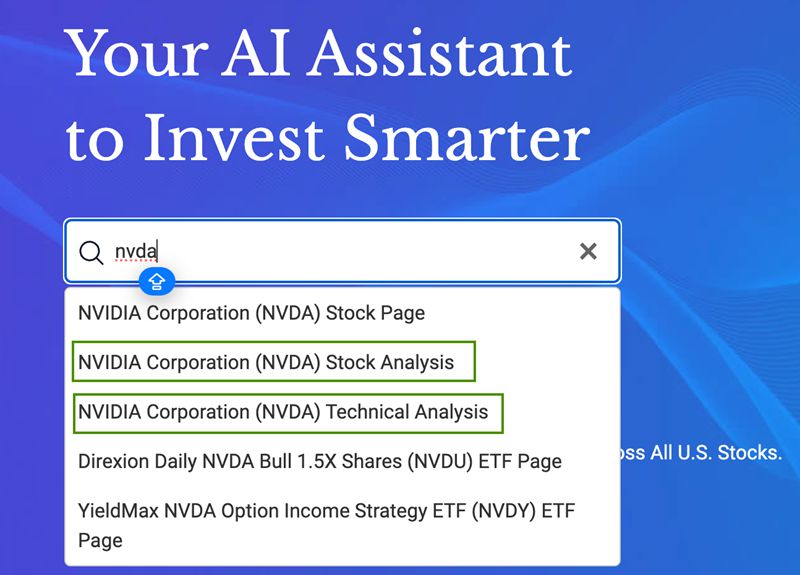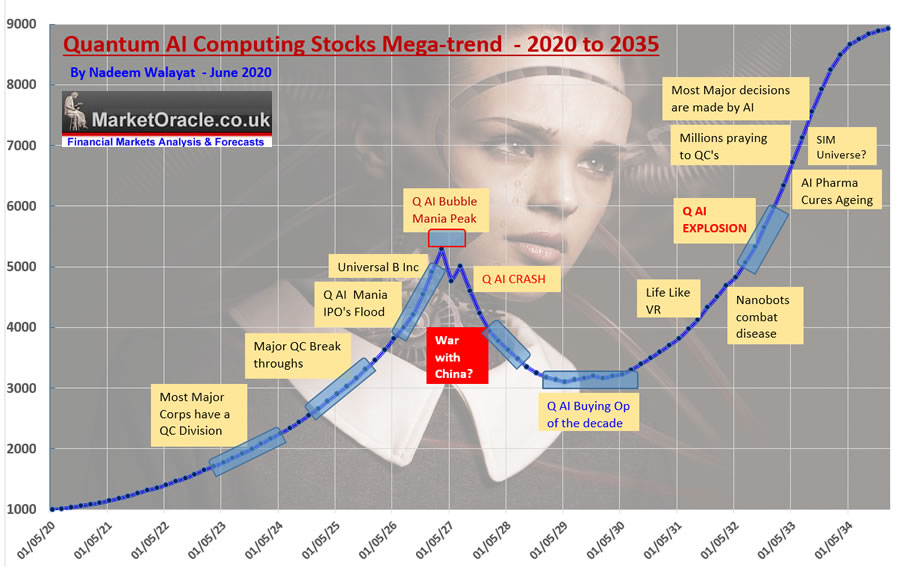20 Excellent Tips For Deciding On AI Stock Analysing Websites
20 Excellent Tips For Deciding On AI Stock Analysing Websites
Blog Article
Top 10 Tips On Assessing The Data Sources And The Quality Of Ai Stock Predicting/Analyzing Trading Platforms
Examining the quality of data and sources that are used by AI-driven stock prediction as well as trading platforms is critical to ensure reliable and accurate information. Poor data can lead to inaccurate predictions as well as financial losses, and a lack of trust of the platform. Here are 10 top tips for evaluating the quality of data and sources:
1. Verify Data Sources
Be sure to verify the source: Ensure that the platform uses data from reliable sources (e.g. Bloomberg, Reuters Morningstar or exchanges like NYSE and NASDAQ).
Transparency. Platforms must disclose their data sources and updated regularly.
Avoid single-source dependencies: Reliable platform often aggregate data across multiple sources in order to limit mistakes and bias.
2. Examine the freshness of data
Real-time and. delayed data: Determine if the platform is providing actual-time data or delaying information. Real-time information is essential to ensure that trading is active. The delayed data is sufficient for long term analysis.
Verify the frequency of updating information (e.g. hourly minutes by minutes or daily).
Data accuracy of the past Make sure that data is uniform and free of irregularities or gaps.
3. Evaluate Data Completeness
Check for missing data: Search for gaps in the historical data, missing tickers, or insufficient financial statements.
Coverage: Ensure the platform provides a broad variety of markets, stocks indexes, and other equities that are relevant to the strategies you use for trading.
Corporate actions: Check if your platform allows stock splits and dividends as well as mergers and other corporate actions.
4. Test Data Accuracy
Cross-verify the data: Compare data from the platform to other sources of data you trust to assure that the data is consistent.
Look for errors: Search for anomalies, incorrect prices and financial metrics that don't match.
Backtesting using historical data for backtesting trading strategies to see if results are in line with expectations.
5. Consider the Data Granularity
Level of detail: Ensure the platform offers granular data like intraday prices volumes bid-ask spreads, as well as the depth of an order book.
Financial metrics: Ensure that the platform has detailed financial statements, including the balance sheet, income statement and cash flow as well as key ratios, such P/E, ROE, and P/B. ).
6. Make sure that Data Cleaning is checked and Preprocessing
Data normalization - Ensure that your platform is able to normalize your data (e.g. adjusting dividends or splits). This will ensure the consistency.
Outlier handling - Check how the platform handles outliers and anomalies.
Incorrect data: Determine if the platform uses reliable techniques to fill in the missing data points.
7. Check data to determine if they are consistent.
Align all data with the same timezone. This will avoid discrepancies.
Format consistency - Check to see if data are presented in the same format (e.g. units, currency).
Cross-market consistency : Verify data Harmonization across various markets or exchanges.
8. Assess Data Relevance
Relevance of the data to your trading strategy: Ensure that the data you collect is in line to your trading style.
Feature selection: Verify whether the platform provides relevant features to enhance forecasts (e.g. sentiment analysis, macroeconomic indicator, news data).
Review Data Security Integrity
Data encryption: Ensure that your platform is using encryption to secure data during transmission and storage.
Tamperproofing: Check that the data hasn't been altered, or manipulated.
Compliance: Check whether the platform is compliant with data protection regulations (e.g. GDPR, the CCPA).
10. The Transparency Model of AI Platform is Tested
Explainability: Make sure the platform provides insights into how the AI model utilizes data to create predictions.
Bias detection - Check whether your platform actively monitors models and data for biases.
Performance metrics: To assess the reliability and accuracy of predictions, examine the platform's performance metrics (e.g. accuracy, precision recall, accuracy).
Bonus Tips:
User reviews: Read reviews of other users to gauge of the quality and reliability of the data.
Trial period: Test the platform free of charge to check out how it functions and the features available before committing.
Support for customers: Ensure that the platform offers a solid support for problems related to data.
Following these tips can assist you in assessing the sources of data as well as the quality of AI stock predictions platforms. You will be able to make reliable and informed trading decisions. Have a look at the top rated investment ai tips for website examples including ai day trading, ai stocks, best ai copyright, trading ai, ai trading bot, ai copyright trading, ai chart analysis, best ai stock, stock predictor, ai stock predictions and more.
Top 10 Tips To Evaluate The Maintenance And Updates Of Ai Stock Predicting/Analyzing Platforms
To ensure that AI-powered platform for stock trading and prediction remain secure and efficient They must be maintained and regularly updated. Here are the top 10 suggestions to evaluate the maintenance and update practices of these platforms:
1. Updates frequency
Find out the frequency of updates on your platform (e.g. monthly, weekly, or quarterly).
Regular updates demonstrate active improvement of the product and the ability to adapt to market trends.
2. Transparency of Release Notes
Review the release notes for your platform in order to determine what improvements and modifications were made.
Transparent release notes show the platform's commitment towards continuous improvement.
3. AI Model Retraining Schedule
Tips - Find out how often AI models are retrained on new data.
The reason is that markets change, and models need to be revised to ensure their the accuracy.
4. Bug fixes, Issue Resolution
Tips: Find out how quickly the platform responds to bugs or issues that users submit.
Why: The platform will be reliable and functional if bug fixes are carried out promptly.
5. Updates on security
TIP: Check if the platform updates regularly its security protocols to safeguard user data.
The reason: Cybersecurity is essential in financial platforms to stop attacks and fraud.
6. New Features Integration
Check to see if new features are being introduced (e.g. new data sources or advanced analytics) in response to the feedback of users as well as market trends.
Why: Features updates demonstrate creativity, responsiveness to user needs and new ideas.
7. Backward Compatibility
Tips: Ensure that updates do not disrupt functionality that is already in place or require major configuration.
What is the reason? Backward compatibility guarantees a smooth user experience during transitions.
8. Communication between Maintenance Workers
It is possible to evaluate the transmission of maintenance schedules and downtimes to users.
Why Clare Communication is beneficial: It reduces disruptions and builds trust.
9. Performance Monitoring and Optimization
TIP: Ensure the platform monitors and optimizes performance metrics of the system (e.g. precision, latency).
Why: Ongoing optimization ensures the platform remains functional and scalable.
10. Compliance with regulatory changes
Check if the platform has been updated with its policies and features in order to comply with any new legislation or regulations regarding financial transactions.
What's the reason? Compliance with regulations is required to avoid legal liabilities and maintain consumer trust.
Bonus Tip User Feedback Integration
Make sure the platform includes active user feedback in its upkeep and updates processes. This shows that the platform is focusing on customer feedback to improving.
When you look at these aspects by evaluating these factors, you can ensure that the AI-powered stock prediction system and trading platforms that you select are regularly maintained, updated and able to adjust to the changing dynamics of markets. Follow the top her latest blog for ai for trading for site advice including ai bot for copyright trading, ai coin price prediction, chart ai for trading, best stocks to invest in, ai for copyright trading, best stock analysis website, best ai for trading, investing ai, free ai investing app, best ai stocks and more.